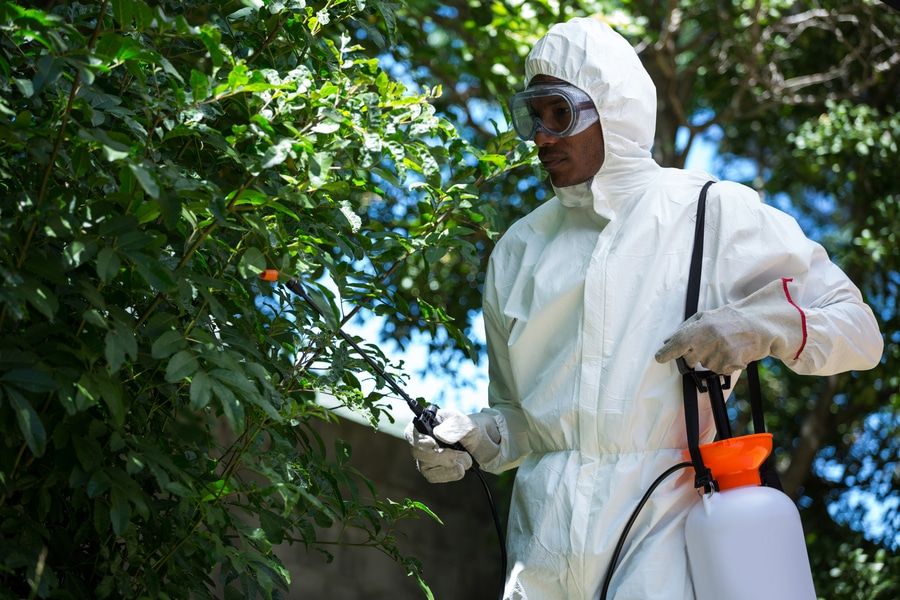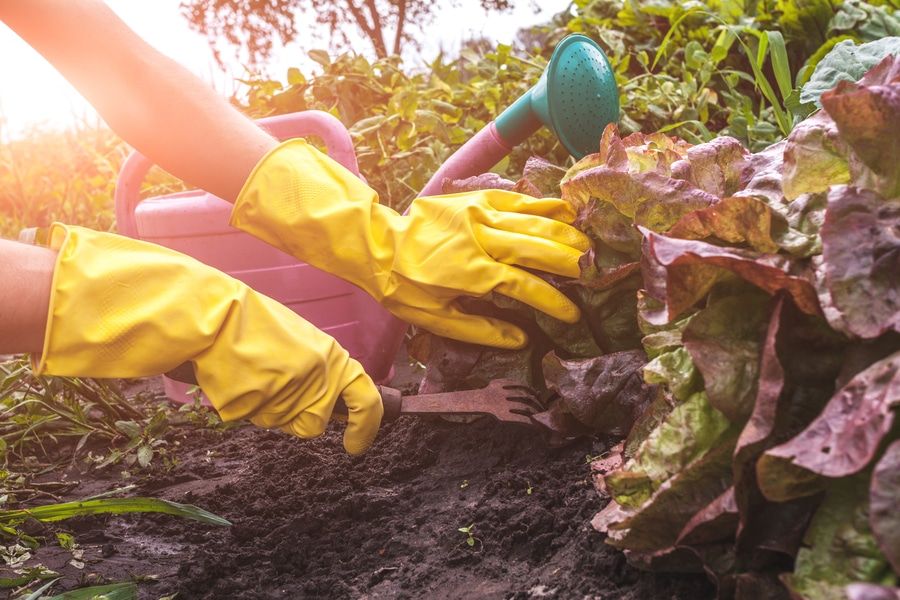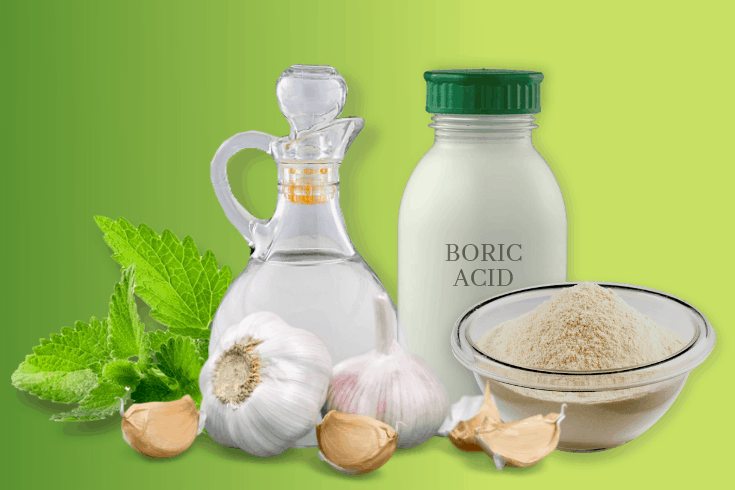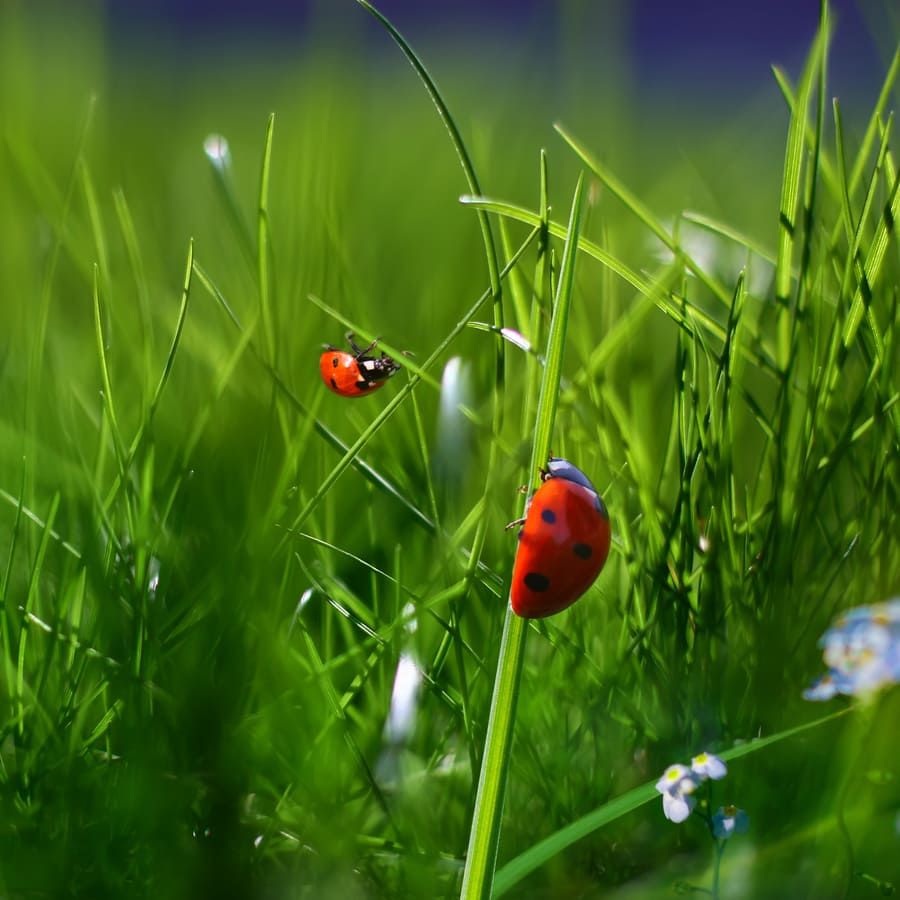In a society that is overrun by chemicals and artificially generated substances and solutions, many individuals are now looking for healthier and natural solutions for their botanical problems. Some of the most common issues faced by both small-time gardeners and large agricultural farmers are insects, weeds, and plant related diseases.
In order to combat these issues many plant enthusiasts rely on insecticides or pesticides. However, these can be immensely harmful to the environment as well as those who might consume the plant-based products. The chemicals present within these solutions can lead to negative side effects in addition to the desired result.
Thus, in order to minimize the effect of these pesticides, a significant portion of gardeners and farmers are turning to organic or natural sources of pest control. In addition, there are also extremely high quality organic fertilizers that we recommend.
Pest Control Basics
Pest control is an immensely common issue among farmers, agricultural workers and gardeners alike. In North American homes alone roughly about 136 million pounds of pesticides are utilized on gardens and lawns to combat these naturally occurring issues.
Some of the issues that these pest control solutions are used for include: grubs, mites and other insects, wireworms, mildew, other fungal diseases and many more.
Some other issues that can also arise are larger animals and pests that are more difficult to get rid of, such as deer, moles, rats and others.
· Grubs
Grubs are the undeveloped forms of different scarab beetles, for instance Japanese beetles. They are generally soft bodied creatures with legs near their heads. They are shaped like the letter C and are white in colour. Grubs predominantly eat the roots of grass as well as other organic matter that is found within the soil. This causes the affected patches of grass or foliage to die. The grubs eventually become full-fledged adult beetles and then mate, which results in more grubs.
· Mites
Mites are small pests found in lawns and gardens as well as agricultural fields. They are hard to spot without any optical assistance. However, they can cause serious damage to plants, grass and crops. They most common types of mites are clover mites and Bermuda grass mites. Mites usually are at their peak during the springtime.
· Wireworms
Wireworms are the larvae of click beetles, which are found in many vegetable crops, such as carrots, onions, beans, sweet corn, peas, and potatoes. These larvae are usually dark in colour as compared to maggots and grubs, usually tan or copper coloured and have harder bodies. They are usually cylindrical in shape and can be 1-4 centimeters in length once they have matured. The matured adults of the larvae are hard shelled beetles, which are of a dark colour. They result in the loss of several tons of crops per year.
· Mildew
Mildew also known as powdery mildew is one of the most common issues that farmers and gardeners face. It is very easy to recognize due to its distinctive characteristics. Mildew is present in a white powdery splay across most plants. It is predominantly found in wet and warm climates. Almost all plants are susceptible to mildew however there are some that are slightly more liable to gain mildew. Some examples include cucumbers, grapes and roses.
· Animals and rodents
Often animals and rodents can also pay your garden or farm a visit. These creatures lead to the loss of fruits and vegetables in your lawn as well as the deterioration of foliage depending on their diet. Many small rodents and creatures such as rats, rabbits and moles tend to feed on the roots and greenery of plants as well as take bites out of fruit and vegetables. This can incur large losses for agricultural growers if the problem escalates or is left unattended. Similarly, larger animals such as deer can cause issues by not only eating the plants but also trampling them.
Organic Pest Control
The purpose of organic pest control is to help control these issues without causing damage to the organisms as well as any of the other stakeholders involved. An example of this can be seen for instance when trying to get rid of mites. A chemical based solution can be used to get rid of the mites off a vegetable or fruit. It can work well to kill the mites or get rid of them, but it has a negative effect on the individual who then consumes the fruit or vegetable. This is a negative side effect of the pesticide. The main purpose of using organic pest control is to prevent such negative side effects.
However just because something is organic, it does not necessarily mean that it is also not harmful to the environment or that it will not have negative side effects. Although most negative side effects are created due to man made chemicals that are not biodegradable or that do not assimilate into the environment naturally.
Therefore, in terms of organic farming and organic pest control it is more important to consider the toxicity of an element or solution as compared to whether it is organic or not. However, it is still predominantly accepted that organic and natural substances result in fewer negative side effects.
What Does Organic Mean in Terms of Pest Control?
When considering the term “organic”, it generally refers to naturally occurring substances which are based on the element carbon. However, in relevance to pest control it refers to using methods of control that do not contain man-made chemicals. These organic pest controls usually include various soaps, salts, vinegar, pyrethrum and lime sulfur.
However, the issues not only lie with using organic methods of pest control. The key to preventing negative side effects is to consider which substances are harmful despite being organic.
Organic pest control: prevention
One of the best ways to protect the environment as well as people from the negative side effects of pest control is to adopt organic and natural methods of pest prevention. By preventing the pests before they infest the garden or farm, we can prevent the need for using strong pesticides as well. The following are some pre-emptive measures that can be taken to maintain a healthy lawn and provide a line of defence from pests.
· Remove any weak of the damaged or weak plants
By removing any plants that may be weak you prevent the attraction of predators. Generally, smaller pests and larvae are attracted to weaker plants. As well the plants may already be infected, in which case they need to be removed immediately before they cause the problem to spread. Pull out the plant from the roots and remove it from the vicinity of the garden.
· Organic and nutrient soil
By providing the plants with nutrient filled soil and ensuring that it is organic can lead to stronger and more sturdy plants. This will enable the plants to fight off or prevent fungal diseases from spreading. There are many natural methods for composting available as well as mulching, which can allow you to provide you plants with the right kind of soil to protect them. Similarly, soil can be top-dressed with natural fertilizers or compost.
· Practice minimal disturbance
By using no-digging or no-tilling methods, you can significantly reduce the chances of pests infecting your garden. This also promotes the growth of healthy microbes and relies on the natural “food web” of the soil to cycle nutrients the soil and prevent diseases from occurring. One of the methods for this are to place a thick layer of compost, mulch or manure over the surface of the soil. This is then incorporated throughout the deeper levels of the soil by the action of worms and healthy microbes.
· Rotation of crops and mixed plantation
Rotation cropping refers to changing the type of plant grown in a field or area every season or every year. This is important in maintaining nutrient soil and controlling pests, weeds and other issues. By changing the crops every season, it prevents the soil from being stripped of a specific nutrient as different plants depend on various nutrients. When the cycle of rotation returns to the original crop the soil has regained most of its nutrients and thus can grow the same crop well. It also helps control pests as they are generally crop or plant specific and so they die down when the plants are changed. Afterwards the same plant can be replanted once the pests have been diminished.
Similarly, mixed planation prevents the spreading of pests as well, as they are usually plant specific and do not spread through the other crops. By for instance planting one row of a plant and then the next row of another crop than back to the first one, pests will not infect the second row and will also not carry over to the third row.
· Prevent habitation of insects
Often unwanted insects and critters can build their homes within your lawn or garden. By making sure to clean and maintain your garden you can prevent them from breeding there. Ensure you remove many weeds, debris and clutter to prevent them from manifesting among your plants. Using clean mulch will also deter pests from your garden.
· Ensure foliage is not wet
As mentioned, damp and warm climate attracts all manner of fungal diseases, including mildew. Warm and wet climate is also a good breeding ground for insects and their larvae. Water that is retained on leaves or foliage in general can be a leading cause of spreading these pests. In order to avoid this, watering should be done early in the day so that there is time for the foliage to dry. Also watering techniques that are aimed more towards the roots are preferable such as drip-irrigation.
· Avoid uncertainty when transplanting plants
When adding new or moving older plants ensure that they are free of any existing pests. By transferring a plant from one garden to another, the pests or diseases that may be present in the first garden can transfer to the second one as well. When purchasing soil or plants ensure they are from trusted sources so that they are pest and disease free.
· Make sure to disinfect
After working in the garden make sure to clean any tools that were used. This especially applies when working with infected plants and then going on to another section of the garden that is not yet infected. By cleaning the tools, you can reduce the chances of the disease spreading or the insects infesting another portion of the garden.
Natural and Organic Remedies for Pest Control
Sometimes prevention is just not enough and there can still be pests present in your garden. In order to combat some of these pests, following are some home remedies that are non-toxic and easy to use. These solutions can be quite effective as well as cost efficient. They usually include ingredients found at home such as garlic, vinegar and cayenne.
· Soft body insects
In order to get rid of soft-bodied insects such as mites, you will require some canola oil, Ivory soap and water. In about a quarter of a gallon or approximately a liter of water, add one tablespoon of canola oil and a couple of drops of the Ivory soap. Pour this mixture into a spray bottle and ensure to shake well. Spray the plants from the top as well as the bottom to make sure that the undersides of the leaves are not missed. This solution helps to suffocate the insects.
· Grubs
In the case of grubs, there is a natural solution available called milky spore. here is a natural, effective remedy called milky spore. Milky spore is a bacterium that causes grubs like Japanese beetles to die out. The grains of the milky spore are spread over the surface of the infected soil which results in the grubs becoming ill and eventually dying.
The benefit of this natural solution is that it is solely targeted towards the grubs and leaves the other beneficial insects unharmed. The milky spore also multiples through the duration of time, waiting to attack the grubs. This is also a long-term solution as one dosage of milky spore is believed to last for forty years.
· Slugs, earwigs, soft-bodied pests
Another natural and non-toxic solution for soft body pests such as slugs is diatomaceous earth. Diatomaceous earth is a silica based sedimentary rock that is ground into fine powder. It can be spread around gardens and over plants in order to get rid of snails and slugs and other such insects.
The granules of this solution are very small and only harmful to the bodies of the small pests. The insects also cannot become immune to it as it does not work chemically but mechanically. It can be easily obtained in garden stores or online. It is also safe for humans and is even used to treat some medical conditions.
· Fungal Diseases
In order to combat fungal diseases an effective homemade remedy is sodium bicarbonate, also known as baking soda. Sodium bicarbonate works to fight of fungal infections by causing a disruption in the ionic balance of the fungal cells. This causes the cells to collapse and fungal growth to cease.
Create a mixture using one tablespoon of baking soda and adding it to a one gallon or approximately four liters of water. Place this moisture into a spray bottle and spray the affected areas. Do this for a couple of days until the problem is gone.
· Wireworms
Wireworms are found in many vegetable crops, in order to save your vegetables from them, utilize slices of potatoes. As the wireworms are generally attracted to potatoes as mentioned above use the potato slices to lure them away from your crops. Just place some slices of potatoes in your soil prior to planting your crops. The potato will lure the wireworms in, and you can then remove them along with the slices of potatoes. Once the potato slices stop drawing wireworms in you can plant your crops.
· Mites and Other Insects
A non-toxic solution for mites and other such insects is cayenne pepper. For this you will need two tablespoons cayenne pepper and a couple of drops of Ivory soap. This needs to be mixed into a quarter of a gallon or approximately one liter of water. Let this mixture sit overnight and then stir well and add it into a spray bottle. Spray the solution on to the infested plants making sure to spray from both above and below to cover all the foliage. As well make sure to shake the bottle periodically thought-out the application.
· Mildew
To fight off and prevent powder mildew you will require milk and water. Mixing equal parts of water and milk you can create this spray. Put the mixture into a spray bottle and spray on the infected areas. Do this in bright light or when it is sunny. This is a preventative measure and should be applied about every ten days.
Although it is scientists are not entirely sure how this works, they hypothesize that the proteins present in the milk react to the sun and this causes a small antiseptic result. Due to this the fugal cells are burned off and there is no remaining by-product. Thus, for this to be effective it must be conducted under strong light, preferably sunlight.
Another solution that is quite effective against mildew is neem oil.
Organic Pest Control: Beneficial Insects
In order to help your garden with as little chemical help as possible another natural solution is to incorporate beneficial insects. Beneficial insects are those that you can add to your garden by purchasing them or attracting them and they prey on the larvae of harmful insects or the harmful insects themselves. Depending on the problem there are specific insects that can be used. The following are examples of some beneficial insects.
· Ichneumon Wasps, brachonids, and chalcids
Ichneumon Wasps, brachonids, and chalcids are all small insects that can be beneficial to your garden. These insects prey on caterpillars that eat away at your foliage. They can be easily attracted to your garden by planting members of the Umbelliferae family. This includes Queen Anne’s lace, celery, carrots and parsley. You just need to let them flower as the flower is what attracts the insects.
· Ladybugs
Ladybugs are common insects that are found in garden. They are very beneficial in combating pests such as mites, scale, aphids and whiteflies. They can be easily added to your garden by purchasing them or by attracting them to your lawn. They can be attracted by planting members of the compositae or daisy family, yarrow and tansy.
· Nematodes
Another beneficial insect to add to your garden is a nematode. They are highly effective against beetles as well as the larvae of root weevils. They also work very effectively against a very common pest that eats sprouts before they can develop into seedlings; called cutworms.
Nematodes can be purchased in garden centers or online and they usually come in the form of microscopic eggs. Usually they come in millions of eggs placed in a sponge. Just mix them with water and place them in the soil, then they will hatch and get to work. If they happen to get onto the plants just wash them back on to the soil with water. Nematodes are also completely harmless to humans and other animals such as pets.
Conclusion
In conclusion there are many alternatives to harmful chemical pesticides and insecticides. By adopting a natural and non-toxic solution to your pest problems you can prevent many harmful side effects.
There are several home remedies as well as easy to purchase and cost-effective solutions present to help combat pests. Organic doesn't always mean that something is not toxic, in order to protect the environment and ourselves the toxicity of a solution must be considered.
There are several ways to organically deal with pests, which include preventative measures, home remedies and even beneficial insects to help us combat pests.
To help your garden stay healthy, pest-free and free of harmful side effects, look into the organic and natural solutions that can help your garden out.








